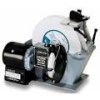Relatively new to grinding and having a problem.
Trying to make a ``cheese cleaver'' of sorts. (Image of inspiration attached. Burt Foster inspired by Tai Goo.)
I wanted a flat edge. No belly.
But I keep getting an ``anti-belly''. When heal area and tip area of the edge are in contact with a flat surface, center of knife has a concave area where the edge is not in contact with the surface.
I am having trouble with getting the tip too hot. And looking at the picture that inspired the design, I see there is a plunge where I had none.
Both of these things might be contributing to the problem since they encourage an angle and unequal pressure where the belt hits to center of the knife.
But I'm not sure how to fix either issue.
Or, more importantly, if there are things I should be doing that anticipate this problem and would help avoid it.
I'm using 1084 and doing post heat treat grinding.
Appreciate any suggestions and feedback.
Trying to make a ``cheese cleaver'' of sorts. (Image of inspiration attached. Burt Foster inspired by Tai Goo.)
I wanted a flat edge. No belly.
But I keep getting an ``anti-belly''. When heal area and tip area of the edge are in contact with a flat surface, center of knife has a concave area where the edge is not in contact with the surface.
I am having trouble with getting the tip too hot. And looking at the picture that inspired the design, I see there is a plunge where I had none.
Both of these things might be contributing to the problem since they encourage an angle and unequal pressure where the belt hits to center of the knife.
But I'm not sure how to fix either issue.
Or, more importantly, if there are things I should be doing that anticipate this problem and would help avoid it.
I'm using 1084 and doing post heat treat grinding.
Appreciate any suggestions and feedback.

